Ajay Sharda
Axis-Aligned 3D Stalk Diameter Estimation from RGB-D Imagery
Sep 15, 2025Abstract:Accurate, high-throughput phenotyping is a critical component of modern crop breeding programs, especially for improving traits such as mechanical stability, biomass production, and disease resistance. Stalk diameter is a key structural trait, but traditional measurement methods are labor-intensive, error-prone, and unsuitable for scalable phenotyping. In this paper, we present a geometry-aware computer vision pipeline for estimating stalk diameter from RGB-D imagery. Our method integrates deep learning-based instance segmentation, 3D point cloud reconstruction, and axis-aligned slicing via Principal Component Analysis (PCA) to perform robust diameter estimation. By mitigating the effects of curvature, occlusion, and image noise, this approach offers a scalable and reliable solution to support high-throughput phenotyping in breeding and agronomic research.
Enhancing seeding efficiency using a computer vision system to monitor furrow quality in real-time
Apr 27, 2025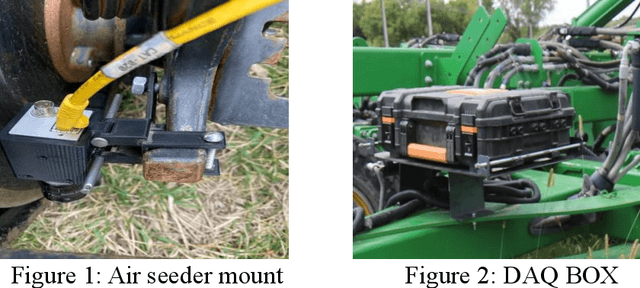


Abstract:Effective seed sowing in precision agriculture is hindered by challenges such as residue accumulation, low soil temperatures, and hair pinning (crop residue pushed in the trench by furrow opener), which obstruct optimal trench formation. Row cleaners are employed to mitigate these issues, but there is a lack of quantitative methods to assess trench cleanliness. In this study, a novel computer vision-based method was developed to evaluate row cleaner performance. Multiple air seeders were equipped with a video acquisition system to capture trench conditions after row cleaner operation, enabling an effective comparison of the performance of each row cleaner. The captured data were used to develop a segmentation model that analyzed key elements such as soil, straw, and machinery. Using the results from the segmentation model, an objective method was developed to quantify row cleaner performance. The results demonstrated the potential of this method to improve row cleaner selection and enhance seeding efficiency in precision agriculture.
RF-DETR Object Detection vs YOLOv12 : A Study of Transformer-based and CNN-based Architectures for Single-Class and Multi-Class Greenfruit Detection in Complex Orchard Environments Under Label Ambiguity
Apr 17, 2025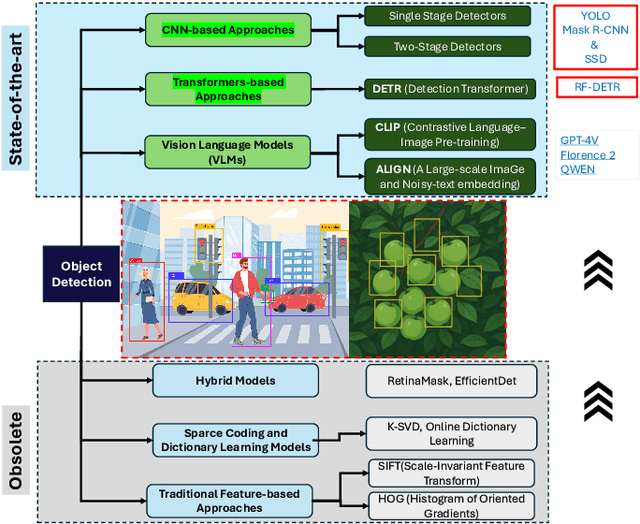

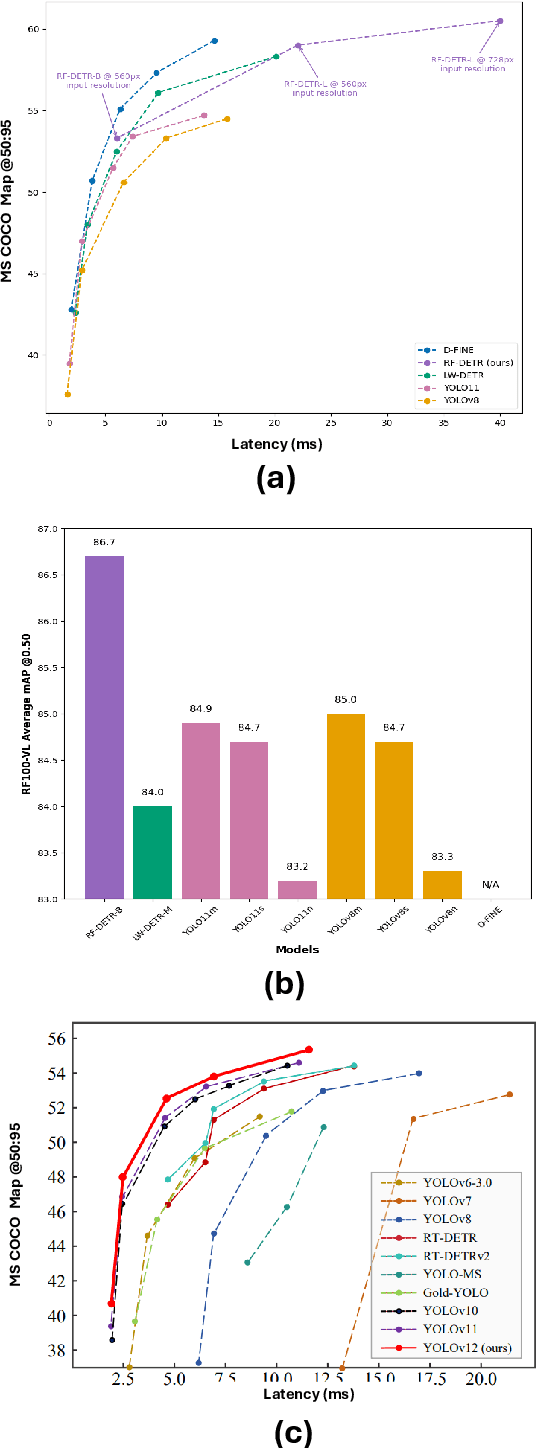
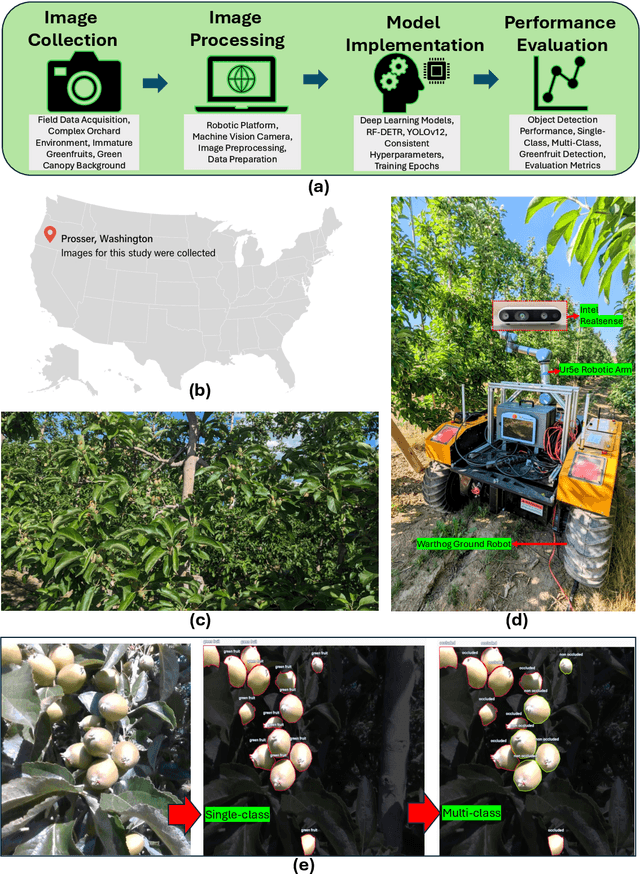
Abstract:This study conducts a detailed comparison of RF-DETR object detection base model and YOLOv12 object detection model configurations for detecting greenfruits in a complex orchard environment marked by label ambiguity, occlusions, and background blending. A custom dataset was developed featuring both single-class (greenfruit) and multi-class (occluded and non-occluded greenfruits) annotations to assess model performance under dynamic real-world conditions. RF-DETR object detection model, utilizing a DINOv2 backbone and deformable attention, excelled in global context modeling, effectively identifying partially occluded or ambiguous greenfruits. In contrast, YOLOv12 leveraged CNN-based attention for enhanced local feature extraction, optimizing it for computational efficiency and edge deployment. RF-DETR achieved the highest mean Average Precision (mAP50) of 0.9464 in single-class detection, proving its superior ability to localize greenfruits in cluttered scenes. Although YOLOv12N recorded the highest mAP@50:95 of 0.7620, RF-DETR consistently outperformed in complex spatial scenarios. For multi-class detection, RF-DETR led with an mAP@50 of 0.8298, showing its capability to differentiate between occluded and non-occluded fruits, while YOLOv12L scored highest in mAP@50:95 with 0.6622, indicating better classification in detailed occlusion contexts. Training dynamics analysis highlighted RF-DETR's swift convergence, particularly in single-class settings where it plateaued within 10 epochs, demonstrating the efficiency of transformer-based architectures in adapting to dynamic visual data. These findings validate RF-DETR's effectiveness for precision agricultural applications, with YOLOv12 suited for fast-response scenarios. >Index Terms: RF-DETR object detection, YOLOv12, YOLOv13, YOLOv14, YOLOv15, YOLOE, YOLO World, YOLO, You Only Look Once, Roboflow, Detection Transformers, CNNs
RowDetr: End-to-End Row Detection Using Polynomials
Dec 13, 2024



Abstract:Crop row detection has garnered significant interest due to its critical role in enabling navigation in GPS-denied environments, such as under-canopy agricultural settings. To address this challenge, we propose RowDetr, an end-to-end neural network that utilizes smooth polynomial functions to delineate crop boundaries in image space. A novel energy-based loss function, PolyOptLoss, is introduced to enhance learning robustness, even with noisy labels. The proposed model demonstrates a 3% improvement over Agronav in key performance metrics while being six times faster, making it well-suited for real-time applications. Additionally, metrics from lane detection studies were adapted to comprehensively evaluate the system, showcasing its accuracy and adaptability in various scenarios.
Aphid Cluster Recognition and Detection in the Wild Using Deep Learning Models
Aug 10, 2023Abstract:Aphid infestation poses a significant threat to crop production, rural communities, and global food security. While chemical pest control is crucial for maximizing yields, applying chemicals across entire fields is both environmentally unsustainable and costly. Hence, precise localization and management of aphids are essential for targeted pesticide application. The paper primarily focuses on using deep learning models for detecting aphid clusters. We propose a novel approach for estimating infection levels by detecting aphid clusters. To facilitate this research, we have captured a large-scale dataset from sorghum fields, manually selected 5,447 images containing aphids, and annotated each individual aphid cluster within these images. To facilitate the use of machine learning models, we further process the images by cropping them into patches, resulting in a labeled dataset comprising 151,380 image patches. Then, we implemented and compared the performance of four state-of-the-art object detection models (VFNet, GFLV2, PAA, and ATSS) on the aphid dataset. Extensive experimental results show that all models yield stable similar performance in terms of average precision and recall. We then propose to merge close neighboring clusters and remove tiny clusters caused by cropping, and the performance is further boosted by around 17%. The study demonstrates the feasibility of automatically detecting and managing insects using machine learning models. The labeled dataset will be made openly available to the research community.
On the Real-Time Semantic Segmentation of Aphid Clusters in the Wild
Jul 17, 2023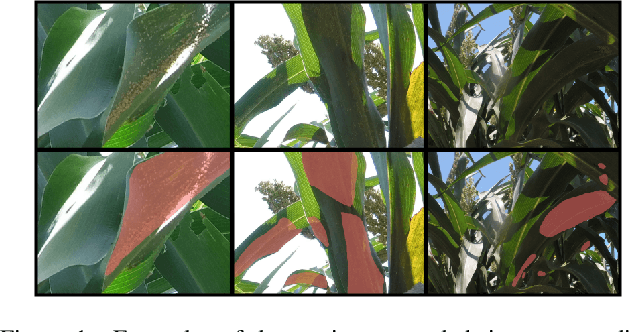

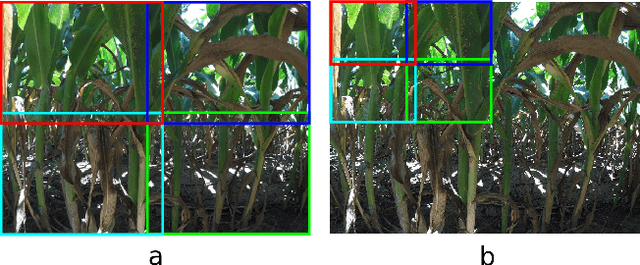

Abstract:Aphid infestations can cause extensive damage to wheat and sorghum fields and spread plant viruses, resulting in significant yield losses in agriculture. To address this issue, farmers often rely on chemical pesticides, which are inefficiently applied over large areas of fields. As a result, a considerable amount of pesticide is wasted on areas without pests, while inadequate amounts are applied to areas with severe infestations. The paper focuses on the urgent need for an intelligent autonomous system that can locate and spray infestations within complex crop canopies, reducing pesticide use and environmental impact. We have collected and labeled a large aphid image dataset in the field, and propose the use of real-time semantic segmentation models to segment clusters of aphids. A multiscale dataset is generated to allow for learning the clusters at different scales. We compare the segmentation speeds and accuracy of four state-of-the-art real-time semantic segmentation models on the aphid cluster dataset, benchmarking them against nonreal-time models. The study results show the effectiveness of a real-time solution, which can reduce inefficient pesticide use and increase crop yields, paving the way towards an autonomous pest detection system.
A New Dataset and Comparative Study for Aphid Cluster Detection
Jul 12, 2023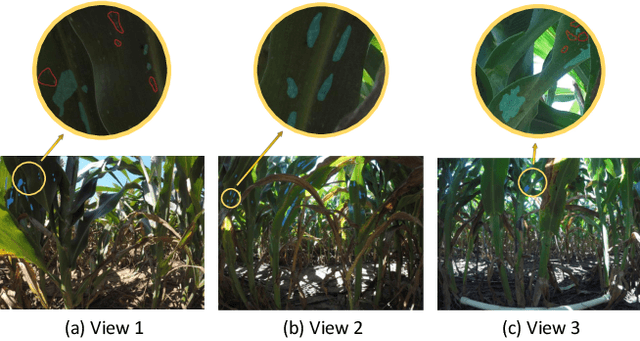


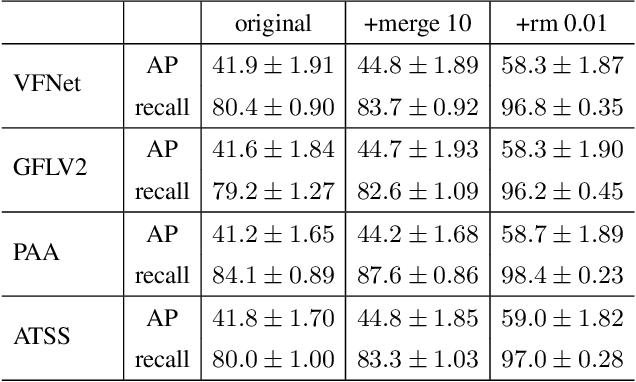
Abstract:Aphids are one of the main threats to crops, rural families, and global food security. Chemical pest control is a necessary component of crop production for maximizing yields, however, it is unnecessary to apply the chemical approaches to the entire fields in consideration of the environmental pollution and the cost. Thus, accurately localizing the aphid and estimating the infestation level is crucial to the precise local application of pesticides. Aphid detection is very challenging as each individual aphid is really small and all aphids are crowded together as clusters. In this paper, we propose to estimate the infection level by detecting aphid clusters. We have taken millions of images in the sorghum fields, manually selected 5,447 images that contain aphids, and annotated each aphid cluster in the image. To use these images for machine learning models, we crop the images into patches and created a labeled dataset with over 151,000 image patches. Then, we implement and compare the performance of four state-of-the-art object detection models.
Dynamic Label Assignment for Object Detection by Combining Predicted and Anchor IoUs
Jan 23, 2022
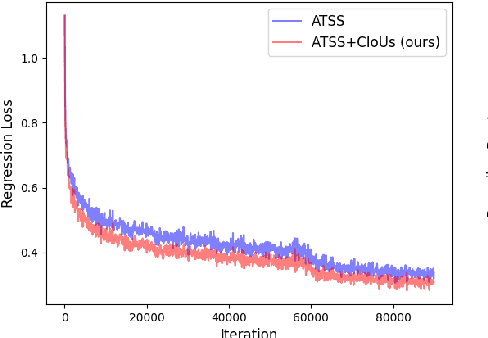
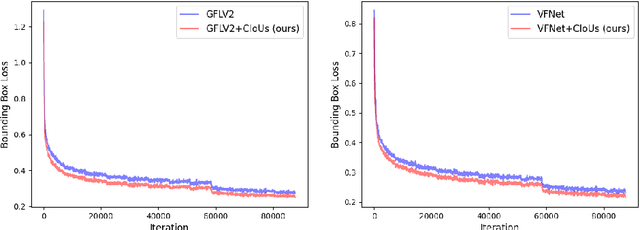

Abstract:Label assignment plays a significant role in modern object detection models. Detection models may yield totally different performances with different label assignment strategies. For anchor-based detection models, the IoU threshold between the anchors and their corresponding ground truth bounding boxes is the key element since the positive samples and negative samples are divided by the IoU threshold. Early object detectors simply utilize a fixed threshold for all training samples, while recent detection algorithms focus on adaptive thresholds based on the distribution of the IoUs to the ground truth boxes. In this paper, we introduce a simple and effective approach to perform label assignment dynamically based on the training status with predictions. By introducing the predictions in label assignment, more high-quality samples with higher IoUs to the ground truth objects are selected as the positive samples, which could reduce the discrepancy between the classification scores and the IoU scores, and generate more high-quality boundary boxes. Our approach shows improvements in the performance of the detection models with the adaptive label assignment algorithm and lower bounding box losses for those positive samples, indicating more samples with higher quality predicted boxes are selected as positives. The source code will be available at https://github.com/ZTX-100/DLA-Combined-IoUs.
 Add to Chrome
Add to Chrome Add to Firefox
Add to Firefox Add to Edge
Add to Edge